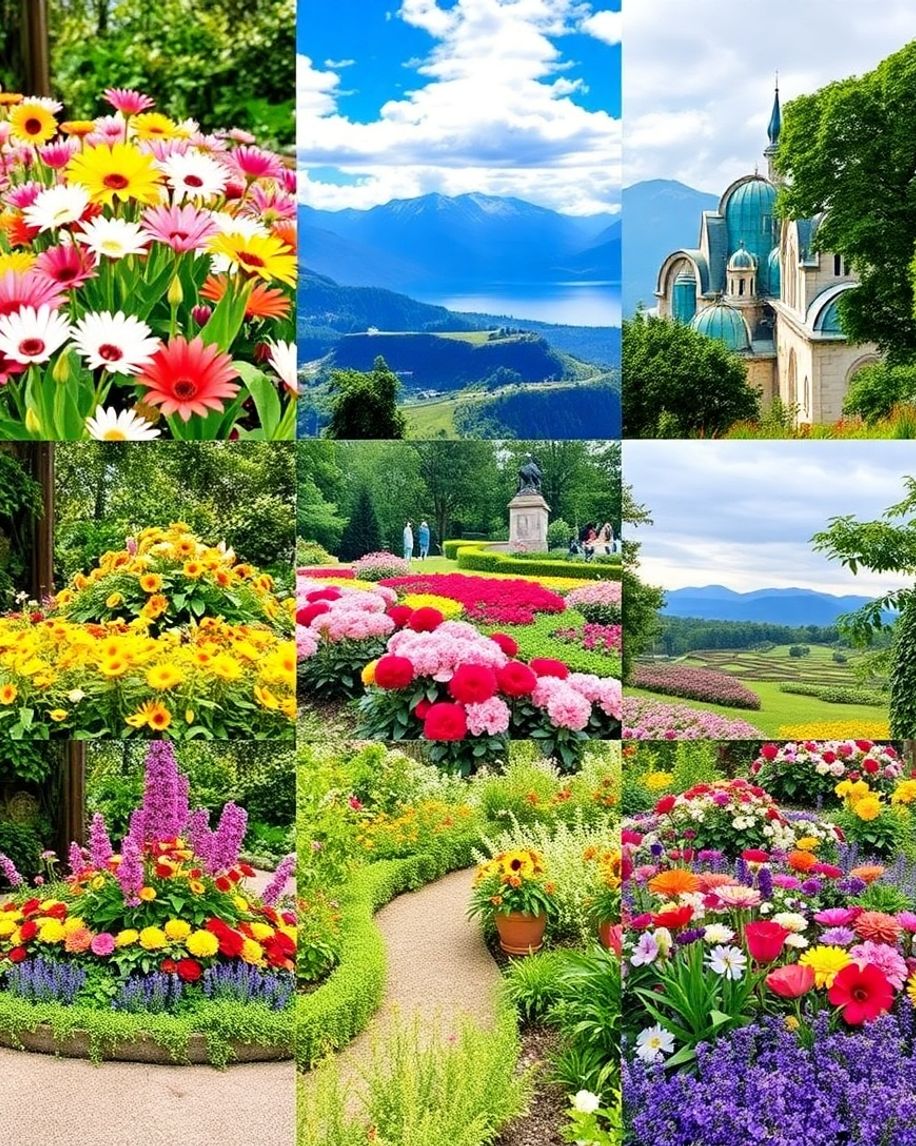
Flowers of the World: 5 Iconic Gardens
Share
1. Butchart Gardens
Right, let's kick things off with a real gem: Butchart Gardens on Vancouver Island, in British Columbia, Canada. I mean, seriously, if you're into gardens, this place is a must-see. It's not just a garden; it's a whole experience. It all started way back when Robert Pim Butchart's cement business was booming. He and his wife, Jennie, moved to Vancouver Island. Jennie, being a keen gardener, started adding a Japanese garden in 1906. As the limestone quarry got used up, instead of leaving an eyesore, Jennie transformed the whole thing into the stunning gardens we know today.
By 1929, they'd added an Italian garden and even replaced their tennis courts with a rose garden. Can you imagine having tennis courts and thinking, "Nah, roses are better"? These days, there are about 50 gardeners keeping the place looking tip-top, with over 700 types of flowers blooming all year round. It's no wonder nearly a million people visit every year. What can you expect?
- The sheer variety of gardens: From Japanese to Italian to rose gardens, there's something for everyone.
- Year-round blooms: No matter when you visit, there's always something in season.
- World-class dining: It's not just about the flowers; you can grab a bite to eat too.
It's a proper day out, and if you're ever in that part of the world, make sure you check it out. You won't regret it!
2. Keukenhof
Keukenhof, nestled in Lisse, Netherlands, is often called the "Garden of Europe," and for good reason! It's one of the biggest flower gardens on Earth, and honestly, it's a total feast for the eyes. Imagine fields bursting with tulips, daffodils, and hyacinths – it's like stepping into a painting. The most beautiful spring garden is open from March to May, so it's the perfect springtime getaway.
What makes Keukenhof so special? Well, it's not just about the sheer number of flowers. The gardens are meticulously designed, with themed areas that showcase different varieties. You can easily spend a whole day wandering around, soaking up the sights and smells. Plus, they often have events and activities going on, like flower shows and guided tours. You can even take a bike tour to see the surrounding bulb fields! It's a great way to learn about Dutch history and the importance of flower farming to the country.
Here's what you can expect:
- Millions of flowers in bloom, creating stunning patterns and designs.
- Themed gardens, including a Japanese garden and a historical garden.
- Various events and activities, such as flower shows and boat trips.
3. Gardens of Versailles

Ah, the Gardens of Versailles! Just a short jaunt from Paris, these gardens are steeped in history and dripping with grandeur. Seriously, you can practically feel the echoes of King Louis XIV as you wander around. They're not just pretty; they're a statement.
- A Royal Vision: These gardens were basically Louis XIV's baby. He wanted to create something that showed off his power and taste, and boy, did he succeed! The whole place screams opulence.
- Symmetry is Key: André Le Nôtre, the landscape architect, was all about symmetry and geometric perfection. Think perfectly manicured lawns, precisely placed flowerbeds, and hedges that look like they've been trimmed with a ruler. It's all very orderly and impressive.
- Size Matters: Covering over 800 hectares, these gardens are massive. You could easily spend a whole day exploring the terraces, parterres, and avenues. Don't miss the Grand Canal – you can even take a boat ride on it!
- Fountains and Sculptures Galore: Keep an eye out for the ornate fountains and hand-carved sculptures dotted around the gardens. The Neptune Fountain, with its giant statue of the Roman god of the sea, is a real showstopper. The Versailles palace is a must-see.
- Citrus Paradise: The Orangery is another highlight, especially if you're into citrus trees. It's basically a giant greenhouse where they keep the trees safe during the winter. And don't forget to check out the King’s and Queen’s groves for a bit of shade on a hot day. You can find fragrant plants here.
4. Jardin Majorelle
Fancy a trip to Marrakech? You absolutely have to visit Jardin Majorelle. This place is seriously special. It's a botanical garden right in the heart of Marrakech, and it was created by the French artist Jacques Majorelle back in the 1920s and 30s. What makes it so unforgettable? The vibrant blue buildings, without a doubt. They create such a striking contrast with all the colourful plants and trees. It's a proper feast for the eyes.
Walking around Jardin Majorelle, you can't help but learn a thing or two about plant life and biodiversity. There's a huge range of plant species to check out, like cacti, bamboo, palms, and loads of other exotic plants. And when you need a bit of chill time, you can relax by the tranquil pond, home to water lilies and lotus flowers. It's so peaceful.
But there's more! Jardin Majorelle also houses the Berber Museum, which showcases the amazing personal collection of Pierre Bergé and Yves Saint Laurent. Think Northern African ceramics, jewellery, textiles, and other fascinating artefacts. It's a real treat for anyone interested in Moroccan culture and art. Honestly, Jardin Majorelle is like a little oasis of calm amidst the hustle and bustle of Marrakech. You won't regret a visit!
Here's why it's a must-see:
- The iconic Majorelle Blue buildings are incredibly photogenic.
- The diverse plant collection offers a glimpse into exotic flora.
- The Berber Museum provides a fascinating insight into Moroccan culture.
5. Villa Rufolo Gardens
Ah, Villa Rufolo! Perched high above the Amalfi Coast in Italy, these gardens offer some seriously stunning views. You'll find them in Ravello, and trust me, it's worth the trip. The Rufolo family, big players back in the 13th century, built this place, and it's been wowing visitors ever since. It's not just the flowers; it's the whole atmosphere – history, art, and nature all rolled into one.
What makes Villa Rufolo so special, you ask? Well:
- The Views: Seriously, the views. From the upper gardens, you can see the entire coastline. It's the kind of view that makes you want to write poetry (or at least take a lot of photos).
- The Architecture: The villa itself is a mix of Arab, Sicilian, and Norman styles. It's a bit of a mishmash, but it totally works. Wandering through the courtyards and towers feels like stepping back in time. You can plan your visit to see it all.
- The Wagner Connection: Richard Wagner, the famous composer, was so inspired by Villa Rufolo that he imagined it as the magical garden of Klingsor in his opera Parsifal. Every summer, they hold a Wagner festival here, which is pretty cool if you're into that sort of thing.
Honestly, if you're ever on the Amalfi Coast, don't miss Villa Rufolo. It's one of those places that sticks with you long after you've left.
